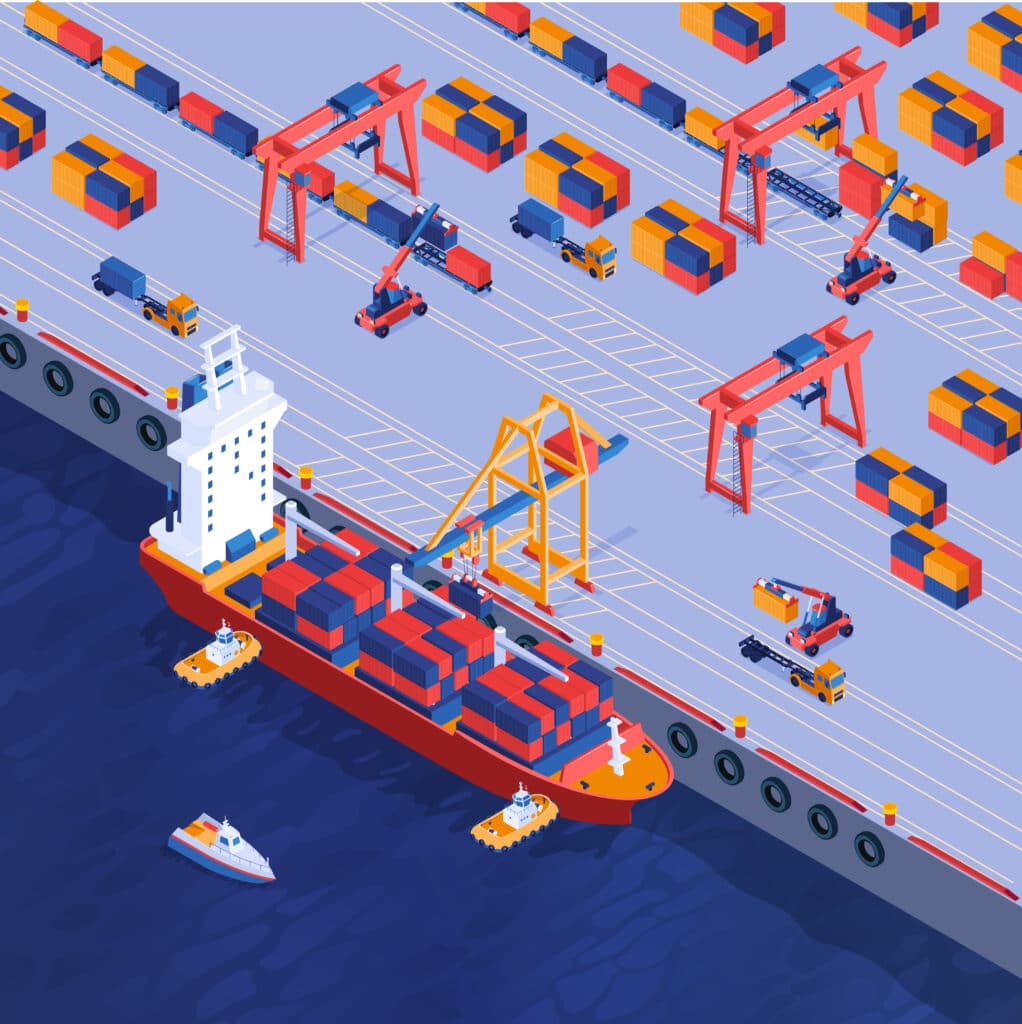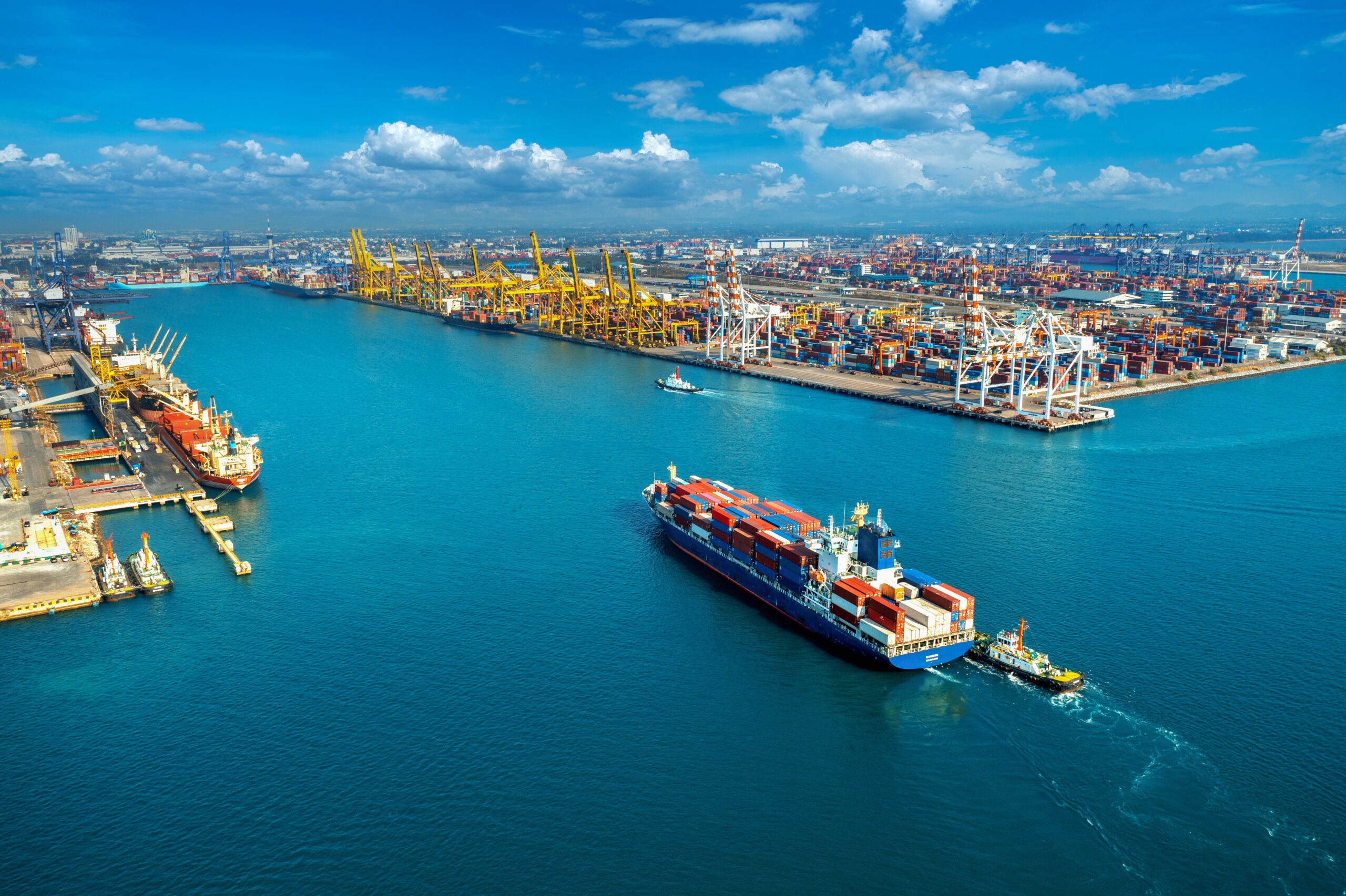Understanding Deep-Water Ports: A Detailed Insight
Deep-water ports distinguish themselves from conventional ports primarily by the depth of water they encompass. Generally, a port serves as a gateway from the sea for vessels, boats, and ships, offering a secure space for anchoring, docking, loading, and unloading cargo, facilitating their onward journey to their destinations.
Unlike regular ports, which cater to recreational or smaller commercial activities and typically do not exceed 20 feet in water depth, deep-water ports are engineered to accommodate very large and heavily laden ships, necessitating water depths of 30 feet or more. These ports are defined as any fixed or floating man-made structures, located beyond a country’s territorial sea and off its coast, designated for the loading or unloading and handling of goods, especially oil, for transportation to any state. This term encompasses all related infrastructure, including pipelines, pumping stations, service platforms, mooring buoys, and similar equipment, provided they are situated onshore of the high-water mark.
India’s Leap into Deep-Water Port Development

A significant milestone in India’s maritime infrastructure is the approval by the Public Investment Board, led by Finance and Expenditure Secretary T V Somanathan, for the construction of a state-of-the-art deep-water port at Vadhavan, Maharashtra. With an estimated cost of INR 76,220 crores, this project has received clearance from the Ministry of Environment, Forest, and Climate Change, aligning with recommendations by the Expert Appraisal Committee.
Following the board’s approval, this monumental project awaits the final sanction from the Union Cabinet. The Jawaharlal Nehru Port Authority (JNPA) is set to commence the tendering process for the engineering, procurement, and construction (EPC) contract shortly thereafter. The Vadhavan Port, poised to be India’s 13th major port and the first to be developed in collaboration with a state government, promises a capacity of 298 million tonnes (MT) annually and is designed to accommodate container ships exceeding 24,000 TEUs, a testament to India’s maritime ambitions.
The Economic Backbone: Significance of Ports to India
Ports stand as the lifelines of a nation’s economy, serving not just as gateways for trade but as engines of growth, employment, and innovation. Their significance extends far beyond the shores they occupy, influencing the economic landscape in profound ways.
- Catalysts for International Trade: Ports are the pivotal points for international trade, enabling the exchange of goods and services across the world’s oceans. For a country like India, with its extensive coastline, ports are especially critical, handling a vast array of commodities crucial for both its domestic needs and global trade commitments. They facilitate the smooth movement of imports and exports, making them indispensable for a country’s trade dynamics and its position in the global economy.
- Employment Generation: The development and operation of ports generate a multitude of job opportunities, directly and indirectly. From dock workers to logistics and supply chain professionals, ports are a source of livelihood for millions. The ripple effects extend to ancillary industries, including shipping, freight forwarding, and numerous service sectors, contributing significantly to job creation and economic stability.
- Stimulating Economic Growth: Ports act as catalysts for economic growth, enhancing the efficiency of trade and commerce. By reducing logistics costs and improving connectivity, ports support the expansion of businesses and industries, fostering economic development in adjacent areas and beyond. The strategic development of ports can lead to the emergence of industrial clusters, special economic zones, and maritime hubs, further boosting economic activity and innovation.
- Revenue Generation for the Government: The operations of ports contribute substantially to the national and local government revenues through port dues, berth hire charges, and other levies. Additionally, the development of commercial facilities within port premises and the leasing of land for industrial and logistical purposes generate significant revenue, aiding in the financial sustainability of port infrastructure and contributing to the public exchequer.
- Enhancing Connectivity: Ports are central to enhancing connectivity, not just within a country but globally. The development of efficient port infrastructure, coupled with robust road, rail, and inland waterway links, ensures the seamless movement of goods and people. This connectivity is vital for the integration of domestic markets with the global economy, facilitating trade and fostering economic cooperation.
- Strategic and Geopolitical Significance: In the context of global geopolitics, ports hold strategic importance. For India, developing modern, efficient ports is essential to counterbalance regional influences and assert its maritime capabilities. Ports play a crucial role in national security and in safeguarding a country’s maritime interests, enhancing its influence in international affairs.
- Regional Integration and Connectivity: Ports can significantly contribute to regional integration, especially in less connected regions. By serving as hubs of maritime activity, ports can drive the development of regional trade corridors, fostering economic integration and cooperation among neighbouring countries.
- Security and Sovereignty: Modern ports equipped with advanced surveillance and security systems contribute to national security, ensuring the safe and secure movement of goods. By enhancing coastal security and maritime infrastructure, ports reinforce a country’s sovereignty and its ability to act as a net security provider in regional and international waters.
Challenges Confronting the Indian Ports Sector
India’s port sector is pivotal to its economic infrastructure, facilitating a significant portion of the country’s international trade. However, this crucial sector faces several challenges that, if unaddressed, could hamper its efficiency and growth potential. Understanding these challenges is the first step toward developing effective strategies to overcome them.
- Congestion at Ports: One of the most pressing issues is congestion, which significantly impacts the turnaround time for vessels. The average turnaround time at major Indian ports is notably higher than the global average, leading to delays and increased logistics costs. This congestion is primarily due to the high volume of cargo being handled without adequate capacity or infrastructure to manage it efficiently.
- Inadequate Infrastructure: Despite considerable investments in port infrastructure, many Indian ports still struggle with insufficient capacity to handle the growing volume of cargo efficiently. This limitation is compounded by poor connectivity to and from the ports, including inadequate road and rail links, which adds to the logistical challenges and inefficiencies within the sector.
- Land Acquisition Difficulties: Expanding or developing new port infrastructure often requires land acquisition, which can be fraught with challenges. Opposition from local communities and environmental activists can lead to project delays and cost overruns, complicating the development process and impacting the timely execution of crucial infrastructure projects.
- Complex Policy and Regulatory Framework: The sector is governed by a complex and sometimes fragmented policy and regulatory framework. This complexity can lead to regulatory uncertainty, confusion, and increased costs, hindering the sector’s development and growth. The absence of a unified regulatory body contributes to these challenges, making it difficult for port operators and investors to navigate the regulatory landscape.
- Slow Technology Adoption: The Indian port sector has been relatively slow in adopting new technologies and digital solutions, which could enhance operational efficiency and competitiveness. The lack of automation and digitalization in port operations not only affects the sector’s efficiency but also its ability to compete on a global scale.
- Limited Hinterland Connectivity: Efficient connectivity between ports and their hinterland is crucial for the seamless movement of cargo. However, poor connectivity, due to inadequate rail, road, and inland waterway infrastructure, leads to inefficiencies and increased costs in cargo movement, affecting the overall competitiveness of Indian ports.
- Environmental Concerns: The impact of port operations on the environment cannot be overlooked. Issues such as oil spill pollution, water contamination from ship cleaning and ballast water discharge, and increased sedimentation due to dredging activities pose significant environmental risks. These concerns necessitate stringent adherence to environmental regulations to mitigate the adverse effects on marine ecosystems and local communities.
Addressing these challenges requires a coordinated effort from all stakeholders, including the government, port authorities, and the private sector. Implementing policy reforms, investing in infrastructure development, adopting advanced technologies, and ensuring environmental sustainability are essential steps towards enhancing the efficiency and global competitiveness of the Indian ports sector.
Conclusion
In conclusion, deep-water ports are vital to India’s economic and strategic interests, offering the potential to significantly enhance trade, generate employment, and solidify India’s position in the global maritime domain. Addressing the challenges facing the port sector is crucial for maximizing the benefits of these maritime gateways and ensuring sustainable and inclusive growth.
Also Read: Comprehensive Guidelines for Customs Cargo Service Providers (CCSPs) Under the Customs Act, 1962
Also Read: Essential Guidelines for Successfully Establishing Inland Container Depots (ICDs), CFSs, and AFSs
